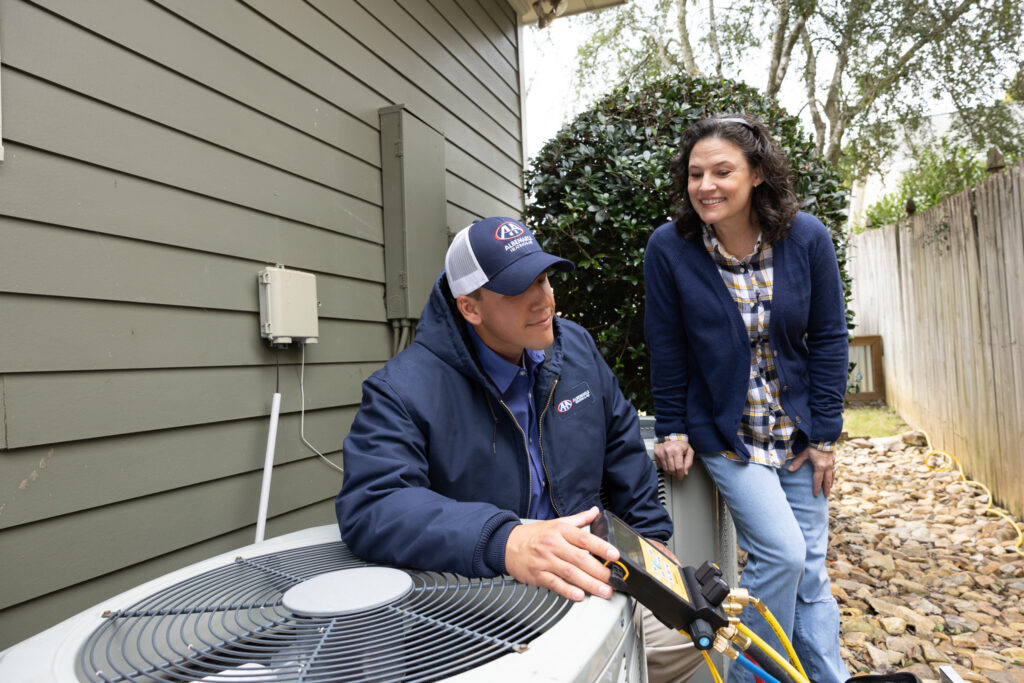
2025 Refrigerant Changes & How It Affects Virginia Homeowners

As we head into 2025, homeowners in Charlottesville, VA, should know that there are big changes affecting the HVAC industry.
The Environmental Protection Agency (EPA) is implementing new refrigerant regulations that will transform the manufacturing and service of air conditioning systems.
These updates are part of an ongoing effort to reduce greenhouse gas emissions and protect the environment. While the transition brings some challenges, the benefits point to a greener future.
Which HVAC Systems Use Refrigerant?
HVAC systems with cooling capabilities, including air conditioners, heat pumps, and ductless mini-splits, rely on refrigerant to function. It works by absorbing and releasing heat to cool or heat your home with incredible efficiency.
Refrigerants have been a cornerstone of HVAC technology for decades, but not all refrigerants are created equal. Some are known for negatively impacting the environment, which is where the latest regulations come into play.
The American Innovation and Manufacturing (AIM) Act of 2020 has driven these changes. This legislation phases down hydrofluorocarbons (HFCs), a category of refrigerants with high global warming potential (GWP).
This means older systems using outdated refrigerants will gradually become obsolete while newer, environmentally friendly options will take their place.
Outdated vs. New Refrigerants
Two refrigerants — R-22 and R-410A — have been the industry standards for years, but their environmental impacts mean they’ll be phased out. Stepping forward to take their place is R-454B.
- R-22: Once widely used, R-22 (Freon) was phased out in 2020 due to its ozone-depleting properties. If your system still uses R-22, repairs can be costly since the refrigerant is no longer produced or imported.
- R-410A: Following R-22’s phase-out, R-410A (Puron) became the go-to refrigerant. It’s non-ozone-depleting and more energy-efficient than its predecessor. However, it has a high GWP, meaning it contributes to global warming. As a result, production and importation of R-410A will stop in 2025.
- R-454B: The primary refrigerant after 2025 will be R-454B (Opteon XL41, Solstice 454B, or Puron Advance). This refrigerant has a significantly lower GWP than R-410A, making it a more sustainable choice.
It’s important to note these refrigerants’ different classifications. R-22 and R-410A are A1 refrigerants, meaning they’re non-flammable and have low toxicity. Despite its environmental benefits, R-454B is classified as A2L, meaning it’s mildly flammable. A2L refrigerants require specific handling and safety measures to avoid hazards during installation and maintenance.
How Are Homeowners Impacted by the Refrigerant Change?
These refrigerant changes bring a mix of opportunities and challenges. On the positive side, homeowners enjoy:
- More efficient cooling: New systems designed for R-454B use advanced technology to offer better performance and energy efficiency than older models.
- A greener home: Installing an R-454B-compatible system reduces your household’s carbon footprint, supporting global efforts to combat climate change.
- Improved system longevity: New HVAC equipment is optimized for performance and durability. With proper maintenance, these systems provide reliable comfort for many years.
Of course, there are some costs to consider. Retrofitting an old system to work with R-454B isn’t possible, so some refrigerant-related problems may require replacing your system. This creates a financial burden upfront, but the long-term benefits make it a worthwhile investment.
Finance Your New HVAC System
Are you worried about the cost of upgrading your home’s comfort system? You’re not alone. The transition to new refrigerants and the rising costs of HVAC components have left many homeowners searching for affordable solutions.
At Albemarle Heating & Air, we offer flexible financing to ease the economic burden of replacing your HVAC system. Whether you need a new air conditioner, heat pump, or ductless mini-split, our financing options let you upgrade without breaking the bank.
We also provide free replacement estimates to help you make informed decisions about your comfort needs.
Other Contributors to Rising HVAC Equipment Costs
Refrigerant changes aren’t the only things driving up HVAC system prices. Several factors are contributing to higher costs, including:
- Updated energy efficiency standards: In 2023, the ratings known as Seasonal Energy Efficiency Ratio (SEER) and Heating Seasonal Performance Factor (HSPF) became SEER2 and HSPF2. The change requires manufacturers to comply with updated testing requirements. While these updates are great for energy savings, they also come with a higher price tag.
- Raw material prices: The costs of copper, aluminum, and other raw materials used to manufacture HVAC components are on the rise.
- Supply chain disruptions: From factory shutdowns to shipping delays, global supply chain issues continue to affect HVAC equipment availability and pricing.
- Higher consumer demand: As more homeowners seek energy-efficient upgrades, the demand for HVAC systems is outpacing supply.
- Labor shortages: Skilled labor is in short supply, which drives up the cost of HVAC manufacturing, installation, and maintenance.
Despite these challenges, upgrading to a new HVAC system remains a smart investment. Modern systems offer better performance, lower energy bills, and a smaller environmental footprint.
Upgrade Your Home Comfort in 2025
Albemarle Heating & Air makes it as easy as possible to navigate the latest refrigerant changes. Our experienced, NATE-certified technicians can help you choose the right system for your home from reputable brands like Daikin, Goodman, Mitsubishi, and Trane. We truly care about your comfort, so we guarantee our work for your peace of mind.
Contact us today for a free HVAC replacement estimate and experience Comfort Just Right in your Charlottesville home.
CHARLOTTESVILLE AND SURROUNDING AREAS Albemarle County | Fluvanna County | Louisa County | Nelson County | Augusta County | Madison County | Greene County | Orange County











